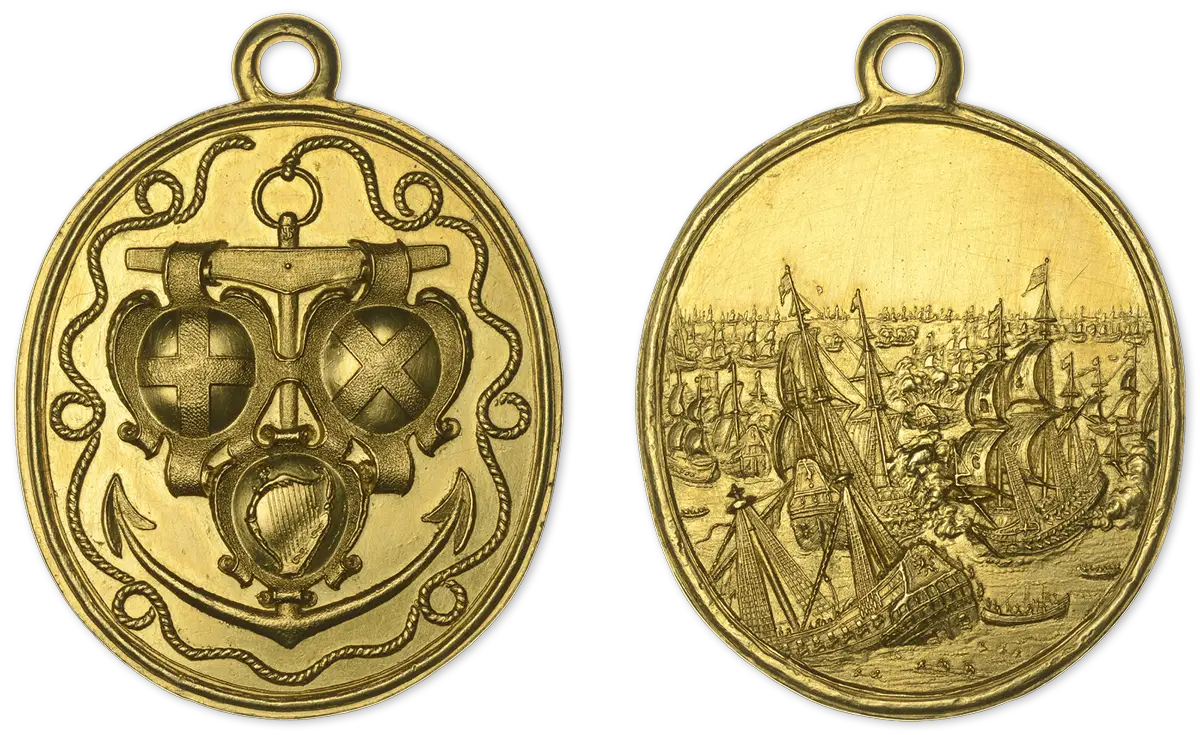Back in December 2020 I was searching for the whereabouts of the Plaine Borderless Medal that (later Admiral Sir) Richard Haddock (c.1629–1715) was awarded for gallantry in the first three battles of the First Anglo-Dutch War (1652–54) (See chapter 6). The young man then served as a junior officer on a ship commanded by his father, Merchant Commander and Parliamentary Captain William Haddock (1607–-67) (see chapter 5).

I emailed Derek Maddock, archivist at Sudeley Castle in Gloucestershire, England. The castle’s collection includes many Haddock family heirlooms. They had been sold at an auction in 1879, following the death of the widow of Charles Desborough Holworthy (1789–1866), a naval hospital agent. At that time he was probably thought to be the last descendant in the family connected with the Royal Navy (see chapters 18 and 20). However, Richard’s medal is not in the Sudeley collection, so I began a diligent search for it. (His father’s medal is now preserved in the National Maritime Museum at Greenwich, London.)
Only 80 of the Plaine Borderless Medals were made in 1653 and very few exist. Many were probably melted down for cash after the deaths of their recipients. I could trace Sir Richard’s medal only to 1914, after which it disappeared from the records. Then I switched gears and decided to settle for a photo of a similar Plaine Borderless Medal.
Amazingly, Dix Noonan Webb (now Noonans Mayfair), an auction house in London, had scheduled a sale including one of these medals for the very next month—January 2021. This was “The North Yorkshire Moors Collection of British Coins formed by Marvin Lessen, Part 4,” catalogue 186. I was stunned. Clear photographs of both the obverse and reverse sides of the medal were posted on the company’s website. I had literally hit gold. I requested and was granted permission from the auction house to use the images in my book, The Haddock Family of English Seafarers: Merchant Mariners and Naval Officers 1327–1941 (see chapter 20).
Lessen (1934–2025) had written a lengthy article about the 1653 medals for The British Numismatic Journal 1997. An American who moved to England, he was a serious and dedicated collector of coins and medals. I am grateful for his detailed description of these naval medals.
